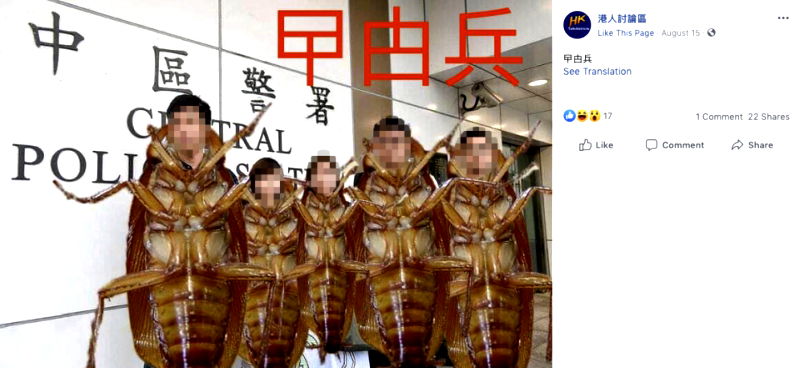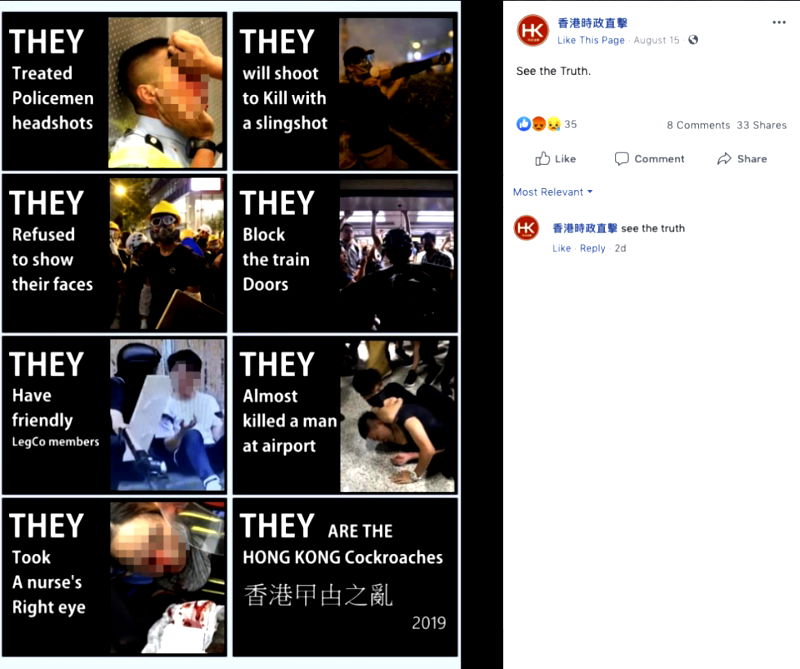How China Hijacked Facebook and Twitter to Discredit Hong Kong Protesters


On Monday, social networking giants Facebook and Twitter announced their discovery of coordinated operations originating from China geared toward the ongoing protests in Hong Kong.
Both platforms, which claim to possess evidence proving government involvement, have since taken actions to address the situation.
The latest propaganda of the Chinese Communist Party (CCP) shows the great lengths it will go to in order to control the Hong Kong narrative beyond mainland China. Through a combination of deceptive tactics, such maneuver became possible in American social media platforms, serving as a wake-up call for stricter enforcement of community policies.
1. Manufacture of Information
China built most of the Great Wall back in the Ming Dynasty to serve one primary purpose: protect itself from invaders. Today, it has erected the Great Firewall, a combination of legislative and technological actions designed to protect its citizens from “misinformation.”
However, the Great Firewall does more than only censor data — it manufactures and disseminates information serving the interests of the CCP. Apparently, this production has extended beyond the function of domestic regulation to influence international perspective.
For one, Chinese state media cherry-picked cases in which Hong Kong police officers were hurt during protests and amplified them to the city. Additionally, some went as far as spreading fake news, claiming that the woman whose eyeball was ruptured after allegedly being shot by a police officer was actually shot by a protester — even coming up with a photo to suggest that she was bribed into joining the protests, the Washington Post reported.

2. Coordination of Operations
In their announcements on Monday, both Facebook and Twitter claimed that the campaign was carried out in a coordinated manner. Twitter, which first disclosed the situation as a “significant state-backed information operation,” stated that it has “reliable evidence” to prove such coordination.
“Based on our intensive investigations, we have reliable evidence to support that this is a coordinated state-backed operation. Specifically, we identified large clusters of accounts behaving in a coordinated manner to amplify messages related to the Hong Kong protests,” it said in a blog post.

On the other hand, Facebook, which acted after receiving a tip from Twitter, revealed that the pages, groups and accounts it removed were part of a “small network” from China that engaged in “coordinated inauthentic behavior.” Additionally, the company vowed to constantly work to detect and stop such activities as “we don’t want our services to be used to manipulate people.”
“Based on a tip shared by Twitter about activity they found on their platform, we conducted an internal investigation into suspected coordinated inauthentic behavior in the region and identified this activity,” wrote Nathaniel Gleicher, Facebook’s head of cybersecurity policy. “As with all of these takedowns, the people behind this activity coordinated with one another and used fake accounts to misrepresent themselves, and that was the basis for our action.”

3. Creation of Fake Accounts
Facebook and Twitter reported that the questionable activities on their platforms involved fake accounts. Off the bat, use of such accounts come in direct violation against Facebook’s Community Standards, which explicitly prohibit misrepresentation.
Facebook removed seven pages, three groups and five accounts — 15,500 accounts followed one or more of the pages, while about 2,200 accounts joined at least one of the groups. According to Gleicher, “The individuals behind this campaign engaged in a number of deceptive tactics, including the use of fake accounts — some of which had been already disabled by our automated systems — to manage Pages posing as news organizations, post in Groups, disseminate their content, and also drive people to off-platform news sites.”

Meanwhile, Twitter suspended 936 accounts in violation of its platform manipulation policies. Aside from fake accounts, these policies prohibit spam, coordinated activity, attributed activity and ban evasion.
“Overall, these accounts were deliberately and specifically attempting to sow political discord in Hong Kong, including undermining the legitimacy and political positions of the protest movement on the ground,” the company noted. “Covert, manipulative behaviors have no place on our service — they violate the fundamental principles on which our company is built.”

4. Utilization of Virtual Private Networks (VPNs)
Both Facebook and Twitter are officially blocked in mainland China, but this had not always been the case. Twitter had been accessible in the country until June 2009, two days before the 20th anniversary of the Tiananmen Square protests.
For Facebook, the ban came about the following month, just after activists used the service to communicate with each other during the Urumqi riots in Xinjiang. Wall posts were reportedly used to spread news after Twitter was shut down in the city.

Since then, netizens have relied on virtual private networks (VPNs) to access both services and other sites blocked in the country. Ironically, state-backed individuals working on the Hong Kong propaganda also utilized the same channels.
“As Twitter is blocked in PRC, many of these accounts accessed Twitter using VPNs. However, some accounts accessed Twitter from specific unblocked IP addresses originating in mainland China,” Twitter said about its own investigation, adding that the profiles it suspended were part of “a larger, spammy network of approximately 200,000 accounts.”
5. Advertisement from Official Entities
Other than fake accounts circumventing the Great Firewall to spread an alternative view on the Hong Kong protests, the Chinese government used official arms to do the work through legitimate channels. However, it did not take long until netizens busted such antics.
Xinhua News, the country’s largest state-run news agency, bought ads on both Facebook and Twitter to promote posts claiming that “order should be restored” in Hong Kong. On Facebook, five such ads started running on Aug. 18.
“Every day I go out and see stuff with my own eyes, and then I go to report it on Twitter and see promoted tweets saying the opposite of what I saw,” social site Pinboard wrote in a tweet, which included a screenshot of a Xinhua video. “Twitter is taking money from Chinese propaganda outfits and running these promoted tweets against the top Hong Kong protest hashtags.”
CGTN, another state-run outlet, took an anti-democracy rap video to Twitter, which ends with President Donald Trump declaring that Hong Kong is part of China. Clearly, pro-Beijing entities have found a way to use his own words against activists.
In the wake of the revelations, Twitter announced in another post that it will stop accepting advertisements from state-run media outlets. However, the ban will not affect tax-funded or independently-operated networks, such as the BBC.
Meanwhile, Facebook started reviewing policies involving state-run media outlets. The company told the Associated Press, “We’re also taking a closer look at ads that have been raised to us to determine if they violate our policies.”
Featured Image via YouTube / Apple Daily / BBC
Share this Article
Share this Article
